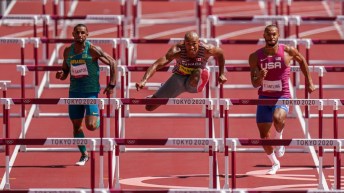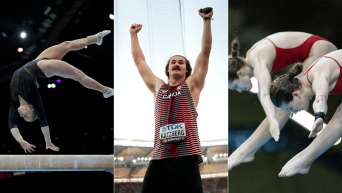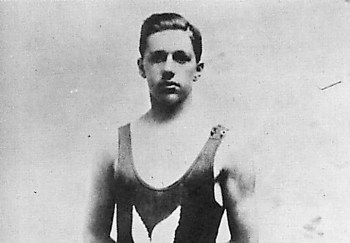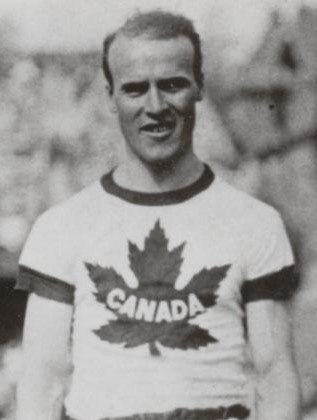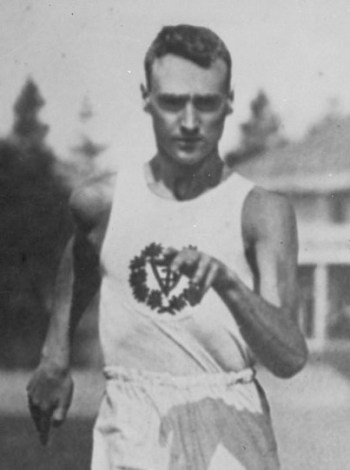150 years of Canadian sport: the 1910s
As the countdown to Canada’s 150th anniversary on July 1 continues, so too does Olympic.ca’s look back at major moments in the country’s sporting history.
With the 1910s upon us, we are now a third of the way through our weekly series. If you missed any of the decades gone by, you can find those here.
But for now, let’s focus on the decade that included the golden anniversary of confederation and the athletes who made Canada proud on the field of play and the field of battle.
1912 – Canada’s First Olympic Double Gold Medallist
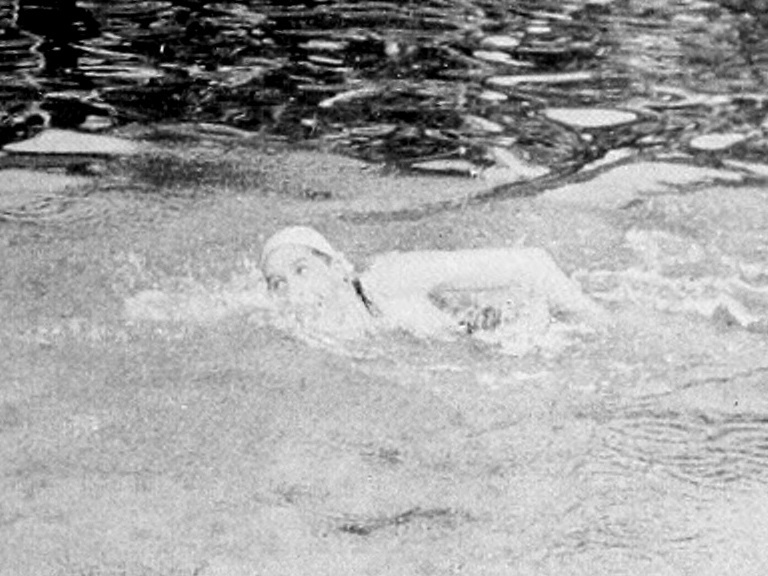
George Hodgson in the 400m freestyle at the Stockholm Games in 1912
Of Canada’s three gold medals won at Stockholm 1912, swimmer George Hodgson was responsible for two, making him the country’s first ever double gold medallist at a single edition of the Olympic Games.
First came his victory in the 1500m freestyle. His competitors knew he meant business when he set a world record in his opening heat. In the final, Hodgson took the pace out quickly, establishing a 25m lead over his biggest rival, Brit Jack Hatfield, at the 500m mark. He passed the 1000m mark in 14 minutes and 37 seconds, a world record for that distance. He completed the 1500m in 22 minutes flat, setting a world record that would stand for 11 years. But he didn’t stop swimming there, going on to set a third world record in the same race as he covered a mile (1609m) in 23 minutes 34.5 seconds.
Four days later, Hodgson was back in the pool for the final of the 400m freestyle, which he won in Olympic record time of 5 minutes 24.4 seconds. Canada’s first Olympic swimming medallist, he remains as Canada’s only Olympic gold medallist in either of those events.
1912 – Canada’s First Individual Back-to-Back Olympic Medallist
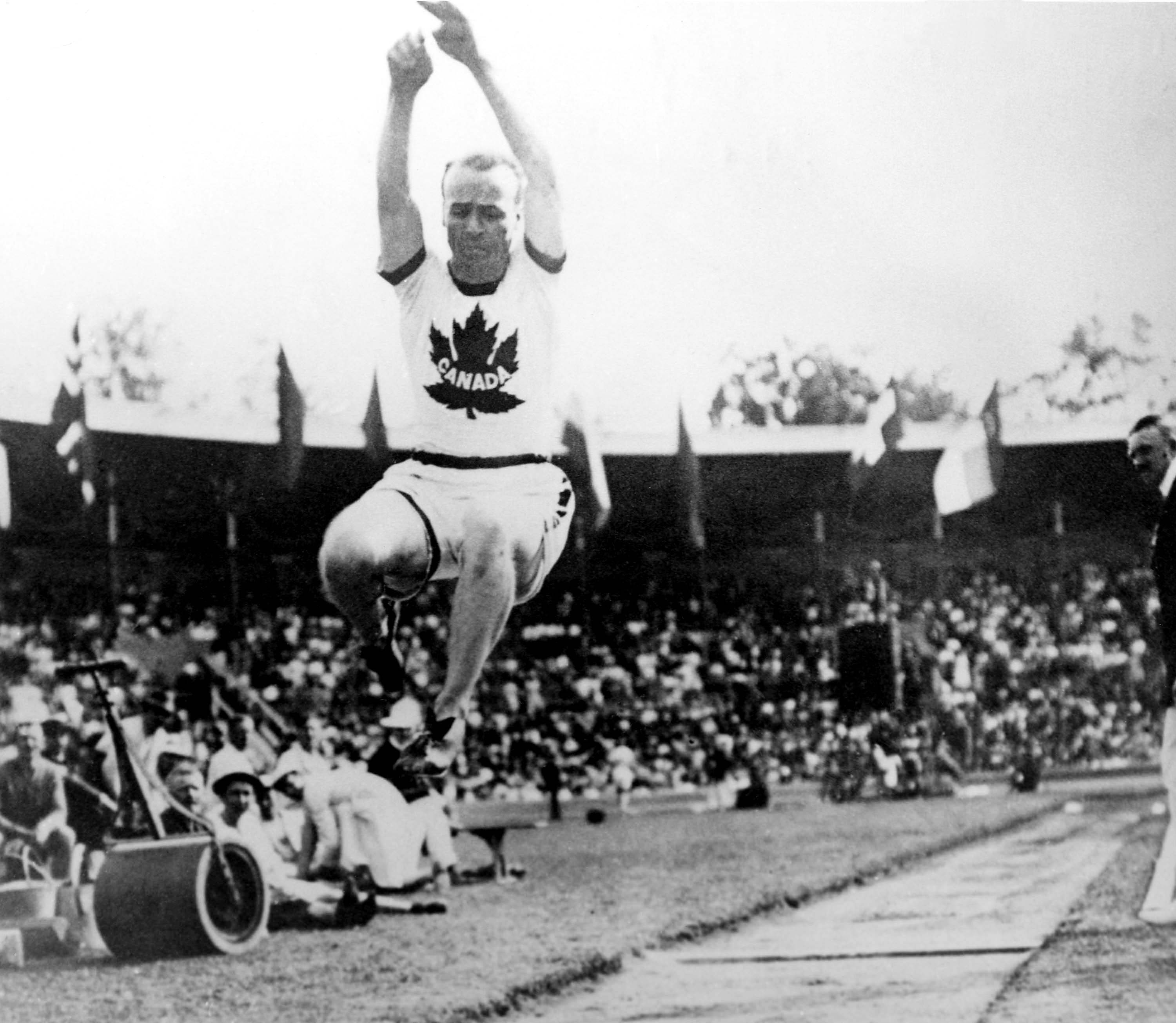
Canada’s Calvin Bricker leaps towards a silver medal performance in the long jump event at the Stockholm 1912 Olympic Games. (CP Photo/COC)
Cal Bricker had already enjoyed Olympic success at London 1908 where he won bronze in the long jump after having set a national record at the Canadian trials that would stand for 27 years. But four years later at Stockholm 1912 he did something no Canadian had done before – win medals at back-to-back Olympic Games in the same individual event. After having missed the silver in London by just a centimetre, he got to the second step of the podium in Stockholm with a leap of 7.21m. Since 1965, Athletics Canada has awarded the Cal D. Bricker Award to the Canadian athlete with the single outstanding performance of the year.
1913 – Canada Reaches Davis Cup Semifinals
In a feat that wouldn’t be replicated for a century, the Canadian team of Robert Powell and Bernard Schwengers advanced to the semifinals of the International Lawn Tennis Challenge, the 12th edition of what is now known as the Davis Cup. In their first round tie against South Africa, they came away with a 4-1 victory. They then defeated Belgium 4-0 before being stopped one round shy of the championship showdown with a 3-0 loss to the United States.
It wasn’t until the quartet of Milos Raonic, Vasek Pospisil, Daniel Nestor and Frank Dancevic got through Spain and Italy during a dream season in 2013 that Canada had a crew back in the Davis Cup semifinals.
1914-1918 – Canadian Olympians in World War I
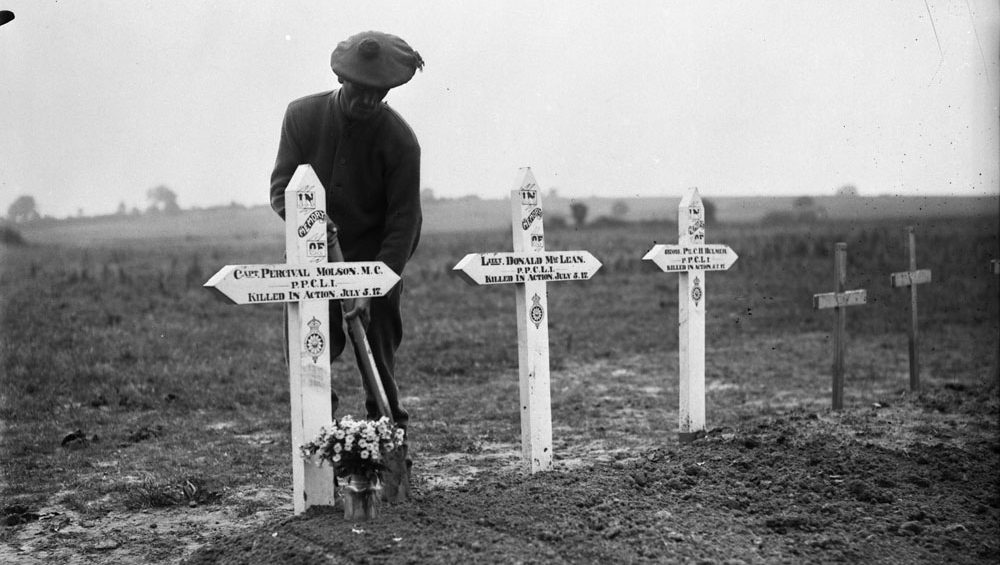
Photo courtesy Canada Dept. of National Defence/Library and Archives Canada
With the onset of the First World War, the second Olympic Games that were to have taken place in the decade had to be cancelled. Instead of competing in Berlin in 1916, many of Canada’s top athletes became soldiers, including five Olympians who lost their lives in battle.
Cree runner Alex Decoteau had finished sixth in the 5000m at Stockholm 1912. Five years later, the Edmonton police officer perished in October 1917’s Second Battle of Passchendaele when he was hit by a sniper’s bullet.
Another 1912 Olympian, James Duffy, finished fifth in the marathon in Stockholm before winning the Boston Marathon in 1914. On April 23, 1915 he was fatally wounded near Ypres, Belgium where Canadian forces faced the first documented use of poison gas on the Western Front.
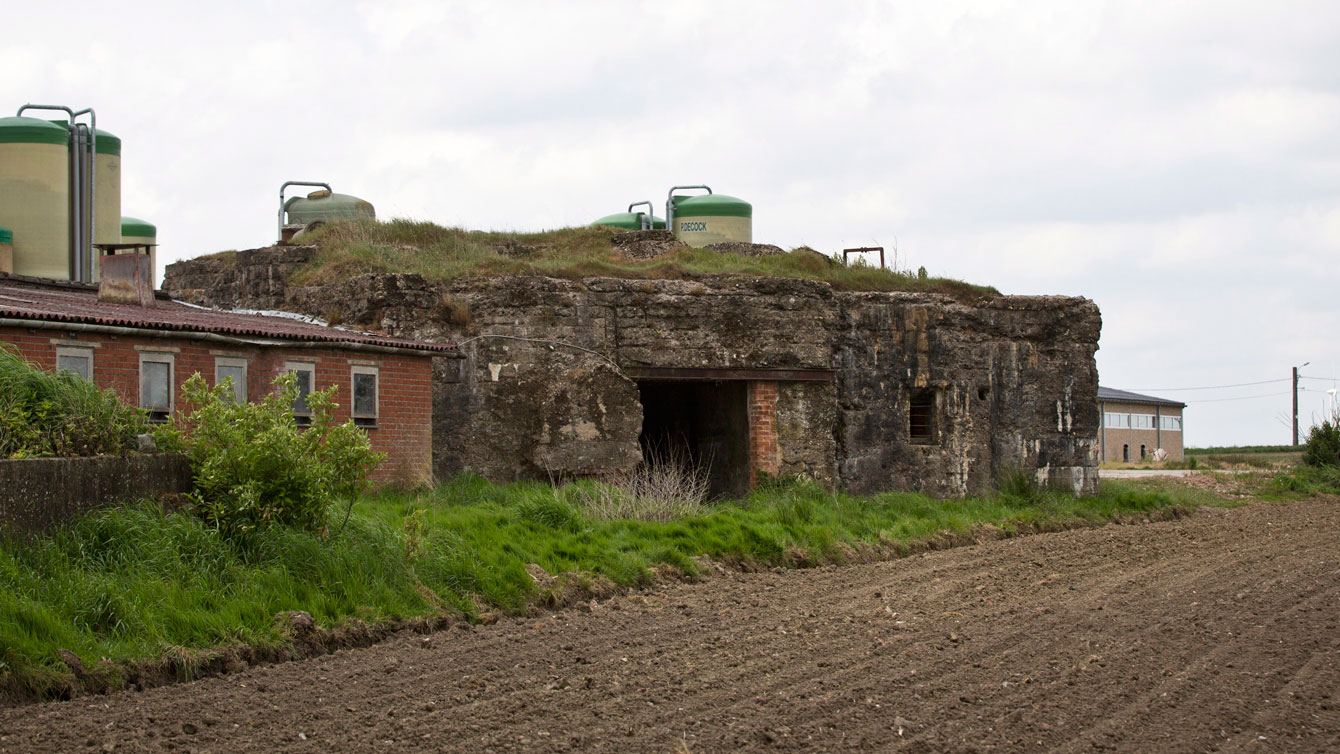
World War I bunker known as “Cheddar Villa” in St. Julien, Belgium. The bunker was a German strongpoint, which was taken on the opening day of the Third Ypres battle. (Canadian Press)
Percival Molson had raced in the 400m at St. Louis 1904 before forming an infantry unit of former McGill University graduates to help reinforce the Princess Patricia’s Canadian Light Infantry. After surviving an attack at the Battle of Mount Sorrel in Belgium in June 1916, he returned to action a year later and was killed by a direct hit from a German howitzer near Vimy Ridge, France in July 1917.
Four years after taking Canada to the Davis Cup semifinals, Robert Powell was an army lieutenant who died leading a charge at Vimy Ridge just two weeks after Canadian forces famously captured the strategic high ground. Powell had competed in both the singles and doubles tennis tournaments at London 1908.
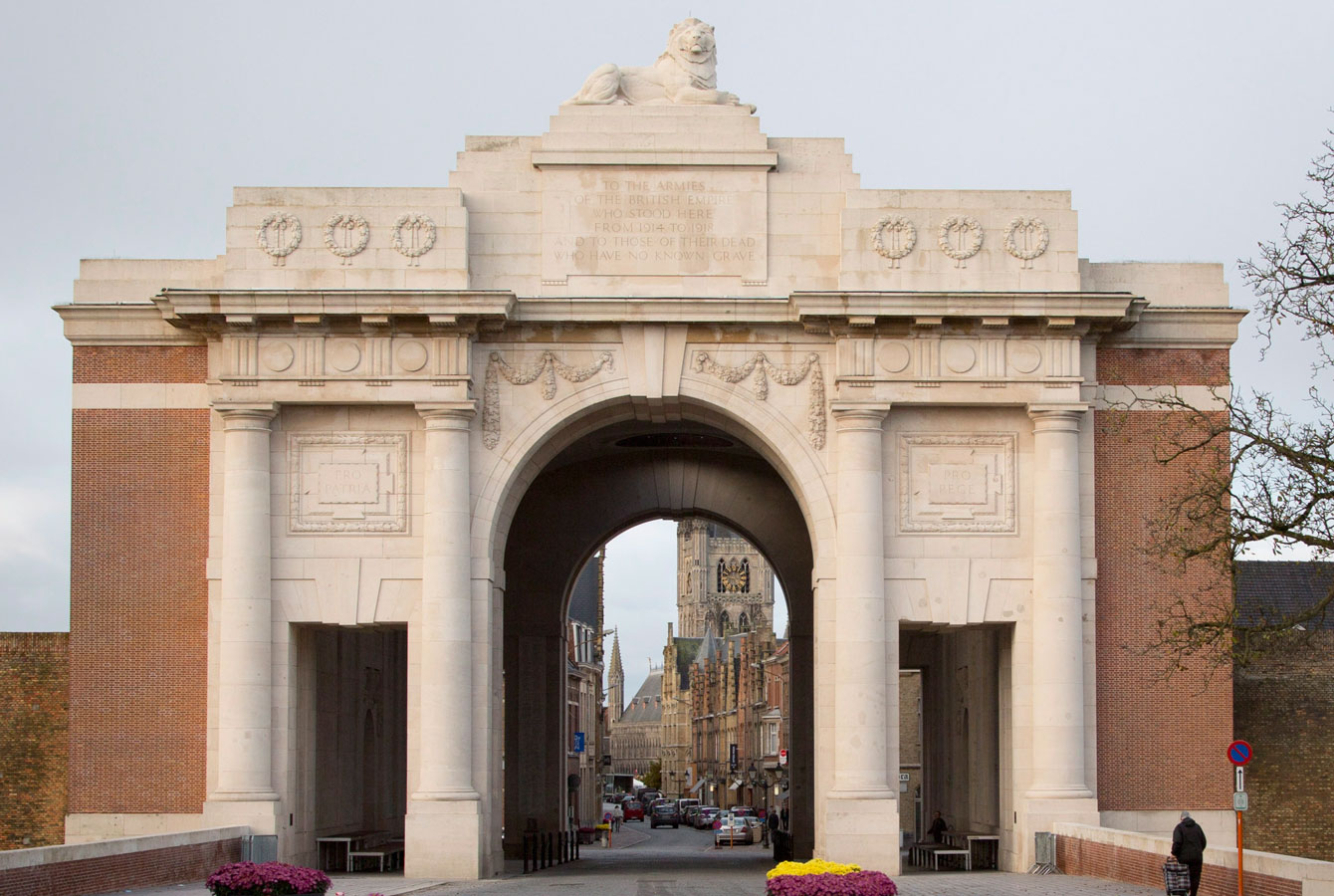
Menin Gate in Belgium where the WWI missing are immortalized.
As a rower, Geoffrey Taylor won a pair of bronze medals with the four and eight at London 1908. He returned to the Olympic Games at Stockholm 1912. Three years later, he went missing during the Second Battle of Ypres after Canadian troops advanced into the village of St. Julien where they encountered poison gas. Taylor’s name appears on the Menin Gate Memorial to the Missing in Belgium.



